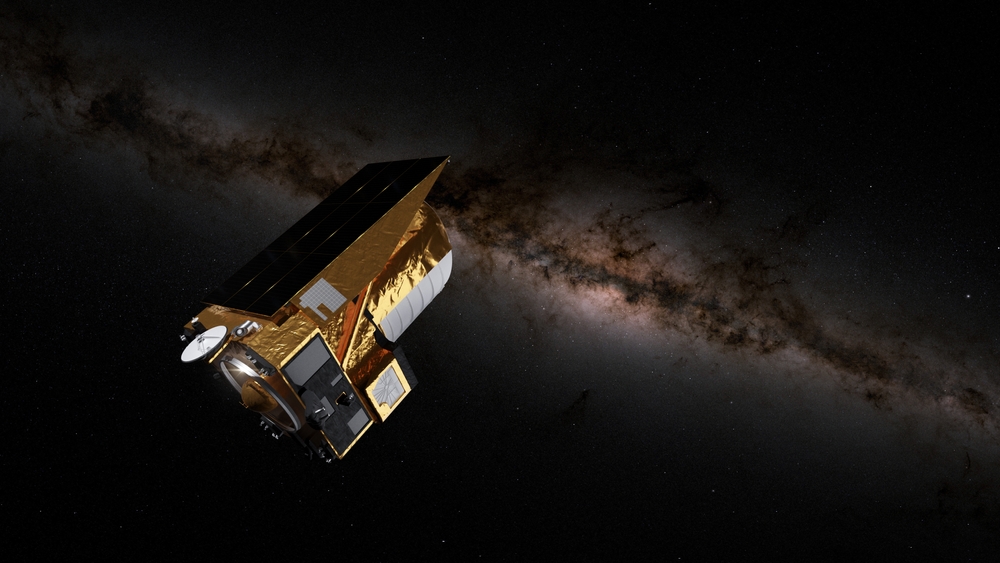Euclid Observatory Reveals Mysterious Cosmic Structure
Innovations and Initiatives Innovations and InitiativesPosted by NewAdmin on 2025-02-11 08:56:45 |
Share: Facebook | Twitter | Whatsapp | Linkedin Visits: 19

Launched on July 1, 2023, the European Space Agency's (ESA) Euclid telescope has already provided an incredible finding during its early testing phase: an Einstein ring, a rare and fascinating cosmic phenomenon. This discovery, which occurred while Euclid was still undergoing initial assessments, highlights its advanced deep-space observation capabilities.
An Einstein ring is an optical illusion created by gravitational lensing, a concept introduced by Albert Einstein's general theory of relativity. The phenomenon occurs when the light from a far-off galaxy gets bent and magnified by the immense gravitational field of a closer galaxy situated directly in front. This effect forms a nearly perfect circular ring around the foreground galaxy. These rings, though rare, are valuable tools for exploring the universe's structure, such as the mysteries of dark matter and dark energy.
Euclid's remarkable discovery was made around the galaxy NGC 6505, situated about 590 million light-years from Earth. Despite NGC 6505 being identified in 1884, this Einstein ring had never been spotted before. The background galaxy responsible for the formation of the ring is an even more distant celestial body, positioned 4.42 billion light-years away. Thanks to Euclid's advanced instruments, designed to map the large-scale structure of the cosmos, this optical illusion was observed in high resolution, revealing something previously unnoticed even in areas that had been well studied.
This discovery illustrates how powerful Euclid is in uncovering hidden phenomena, even in regions that have been extensively explored. According to Valeria Pettorino, ESA Euclid Project Scientist, the finding is particularly intriguing given that the galaxy NGC 6505 had been known for so long, yet the ring remained hidden until now.
Beyond their aesthetic allure, Einstein rings provide significant scientific insights into the universe, particularly in understanding dark matter, dark energy, and unseen cosmic components. By observing how light is distorted by gravitational lensing, astronomers can infer the presence of unseen mass, shedding light on otherwise invisible aspects of the cosmos.
Euclid is expected to map over a third of the sky and identify approximately 100,000 strong gravitational lenses, a feat that will likely revolutionize our understanding of the universe. Until now, fewer than 1,000 such lenses had been documented. This early discovery serves as an exciting prelude to Euclid's mission, which officially began its large-scale survey on February 14, 2024. Euclid’s extensive survey will provide the most comprehensive 3D map of the universe ever created, offering new insights into the forces that govern the cosmos and potentially transforming astrophysics.
Search
Categories
Recent News
- Bihar's Top Cop Opens Doors to Public Grievances
- Hyderabad Gears Up for Presidential Visit: Traffic Diversions Announced
- Hyderabad Expressway Gridlock: Three-Car Pile-Up Causes Chaos
- Hyderabad Gears Up: Security Measures for Presidential Visit
- Hyderabad's Rs 23 Lakh Scam: Fake Trading App Dupes Investors
- Pinkathon Hyderabad: Empowering Women, One Step at a Time
- Hyderabad's Drug Supply Chain Unravelled
- Hyderabad's New Year's Eve: Safety Meets Celebration
Popular News
- Navigating IPO Market Dynamics Amid Volatility and Regulatory Changes
- Innovative Green Practices and Environmental Initiative
- Massive Worldwide Microsoft Outage Disrupts Multiple Sectors
- తెలుగుదేశం పార్టీ - పేదరికాన్ని నిర్మూలించడంలో వాగ్దానం
- Universities Embrace Remote Learning Technologies Amidst Ongoing Pandemic